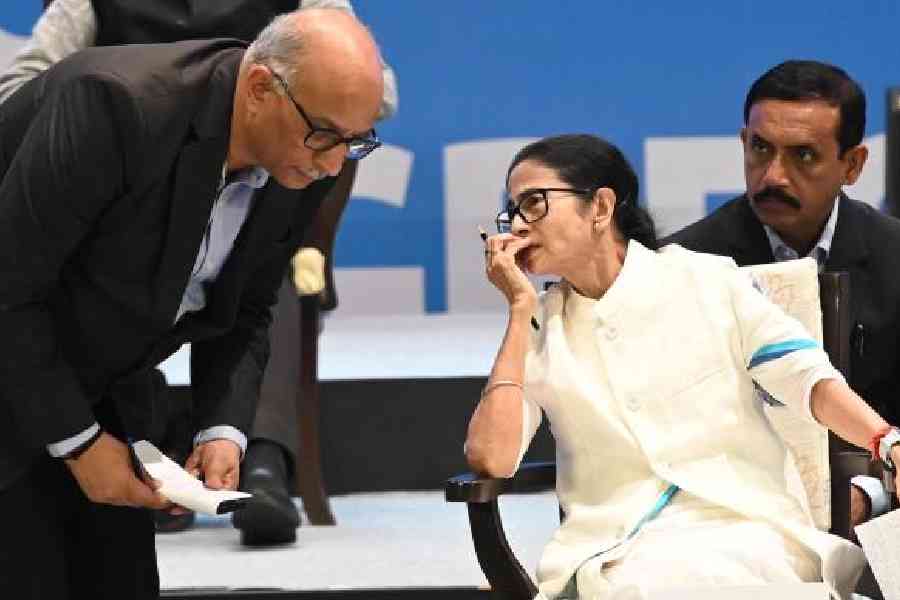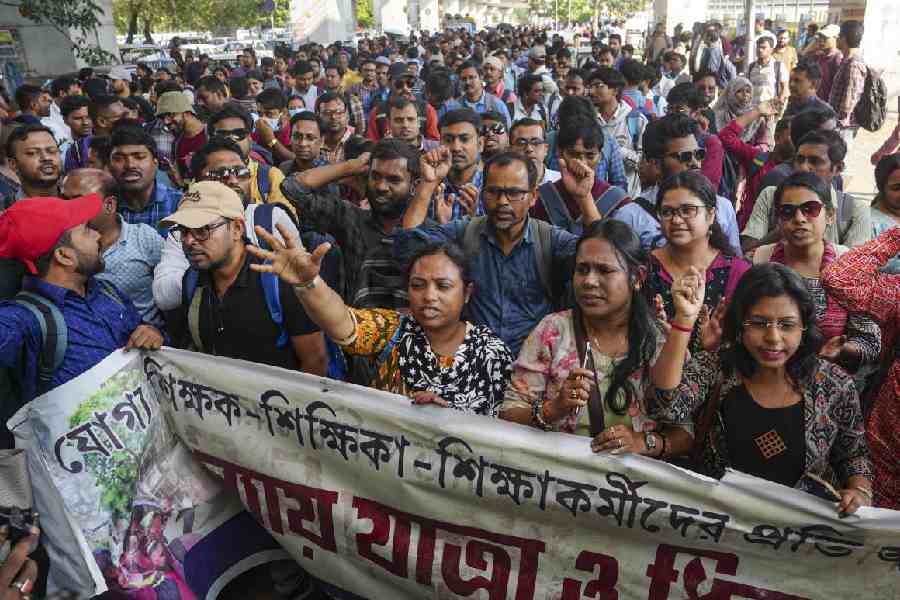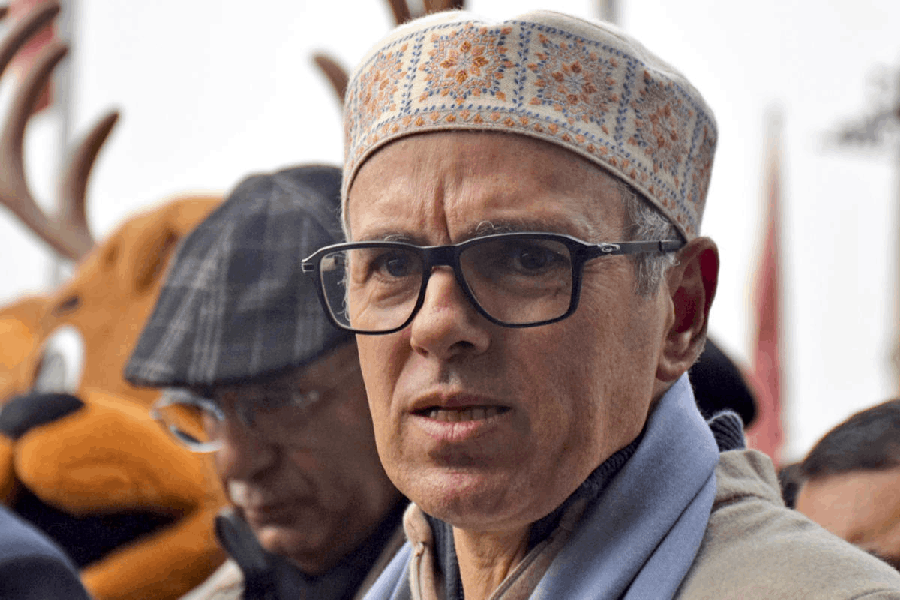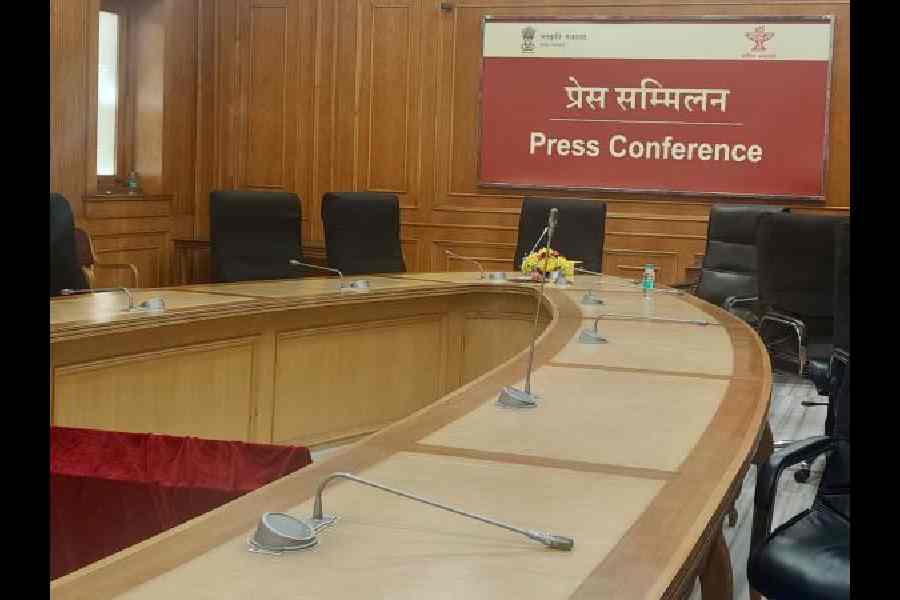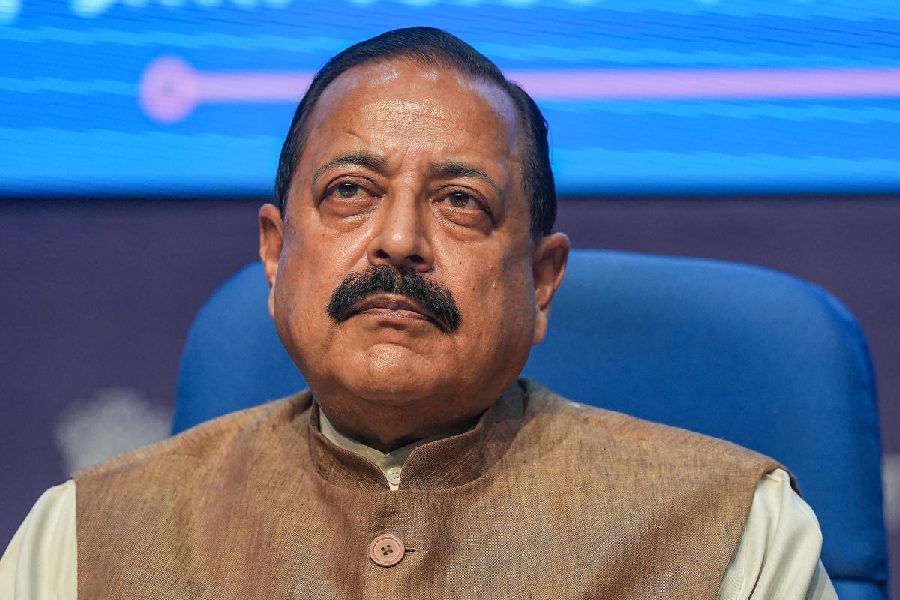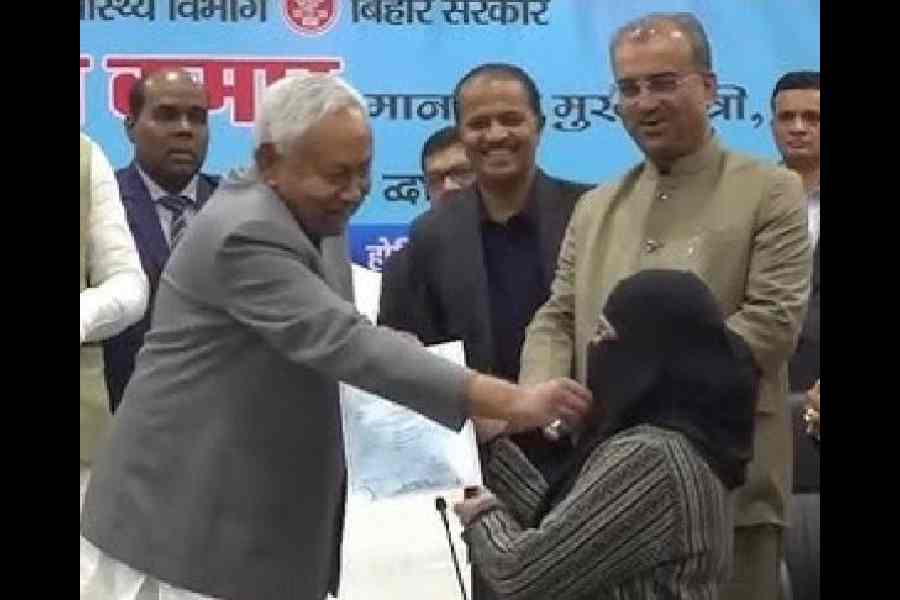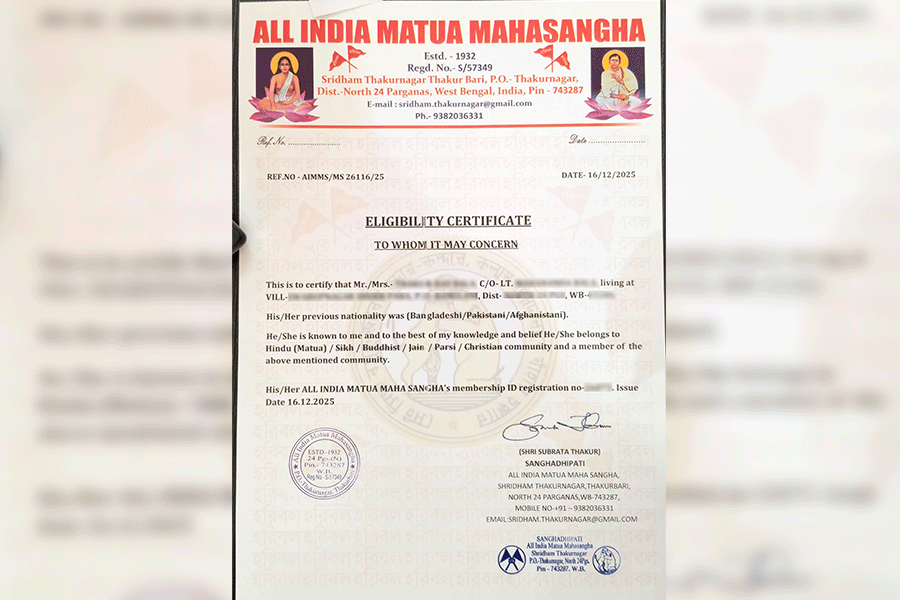 |
| Radia |
New Delhi, Feb. 3: Mukesh Ambani, Ratan Tata, A. Raja, Kanimozhi, Vir Sanghvi, Barkha Dutt…
The purported voices of some of India’s best-known names are playing out at the National Gallery of Modern Art (NGMA), Delhi, as part of a work on “implicit state voyeurism” and beyond that had made the list of finalists for an award on contemporary art.
The installation based on the Niira Radia tapes, which contain 300 days of alleged tapped conversations between the lobbyist and some of the most influential people in the country, features two acts, 33 scenes and 105 pages of screenplay titled Swearing-in-Whispers.
Put together by a Mumbai-based collaborative studio, CAMP, and now on display at one of the most prestigious galleries in the country, the installation is called Pal Pal Pal… after Radia’s caller tune from a song in the film Lage Raho Munnabhai.
That a government-run gallery could find space for a work which can needle the reigning powers stands out against the backdrop of the prevailing atmosphere of intolerance in the country.
“We have only provided the Skoda Art Exhibition space. We have not decided which are the art installations that should be shortlisted. So, we do not know for what reasons they have been shortlisted. Art can no longer be compartmentalised into painting, sculpture, printmaking, etc. Art is now breaking all previously laid out barriers and has diversified into a multitude of media such as installation art, video art, performance art, conceptual art and the new buzz of media art,” said NGMA director Rajeev Lochan.
The Radia tapes had ended up embarrassing a lot of people, added to the perception that the UPA was steeped in corruption and tarnished the reputation of several journalists, though it had little prosecutable evidence of wrongdoing. The 2G case investigators had depended on the tapes. Radia, who shut down her flourishing and game-changing public relations venture in the wake of the leak of the tapes and is now associated with a company that provides strategic guidance to emerging and middle-market companies, was questioned several times but has not been charged with any offence.
The Radia tapes, the outcome of an eavesdropping operation by the government, also triggered a debate on privacy and a related petition by Tata is pending in the Supreme Court.
Shaina Anand of CAMP, which she co-founded in November 2007 with fellow artist Ashok Sukumaran, said: “Our work talks about the implicit state voyeurism, it raises the larger questions about privacy and yet it extends beyond state surveillance. We want our audience to also ask the question when they see the art installation that whose voyeurism are we talking about.
“On the one hand, there is voyeurism by the state and, on the other, voyeuristic pleasure that people get out of listening to the tapes.”
Anand said the “transcripts were parked in various blogs and new sites. We wanted to go beyond the two-minute audio tape or two-day news scandal. So we heard it closely and shaped it, distilled it in this form”.
Anand said CAMP was working within the legal framework since it was not telecasting the tapes through mass media. The Supreme Court had prohibited telecast of the tapes.
The first part of the installation (Act I) is the screenplay — the transcripts of the conversations that are printed on white plaques in black and red ink and lined on a grey wall.
The wall leads to a room where the audio tapes (Act II) can be heard. The room has sofas that face a black wall and headsets lie strewn around. The headsets relay the taped conversations as the transcripts in white text are projected on the black wall.
Visitors walk in gingerly and read a few plaques. Some flip through pages of copies of the spiral-bound screenplay before putting on the headsets and settling down on the sofas to enjoy the 45-minute screenplay. They smile as they hear the purported voices of Tata, Ambani, Kanimozhi, Raja, Ranjan Bhattacharya (Atal Bihari Vajpayee’s foster son-in-law), Sanghvi, Barkha and many others.
“I am hearing about the exhibition for the first time from you. So I cannot comment on it,” Sanghvi told The Telegraph on Saturday.
The screenplay goes on to depict the journey across two months after the May 2009 elections that the UPA won to return for a second consecutive stint at the Centre. “With the new cabinet in power, the lobbyist goes about her business of public relations. She deals in public-private partnership that affects our daily lives from gas to news media,” CAMP says, describing Radia as the central character of the installation.
The screenplay goes beyond the transcripts. It describes the circumstances in which the purported conversations took place. It also describes the environment in which they possibly took place. A recurring feature is the farmhouse where Radia stayed.
“The film asks if the debate around the truth of these tapes is about whether they were edited or not; (and) what could further editing do,” CAMP says.
The exhibition for the third edition of the Skoda Prize, open to artists below 45, goes on till February 26. Karnataka-born L.N. Tallur was declared the winner on February 1 from among the four finalists.


